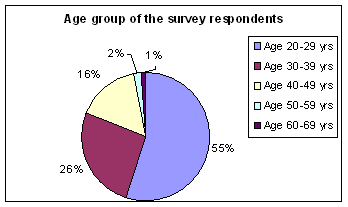 125 Millions Indian may be diabetic by 2035: ASSOCHAM
125 Millions Indian may be diabetic by 2035: ASSOCHAM
Due to sedentary lifestyle, erratic eating habits including higher consumption of fast food and stress render are more prone to diabetic, according to a paper brought out by ASSOCHAM on the occasion of ‘World Diabetic day’ on 14 November.
ASSOCHAM recent survey on “Diabetic on the rise in India” conducted ahead of the World Diabetic Day reveals that that currently 68 million Indians suffer from diabetes, the number of which was 25 million in 2006.
The Health Committee of the Associated Chambers of Commerce and Industry of India (ASSOCHAM) has estimated that by 2035, 125 million Indians might become victim of diabetes if their current lifestyle and food habits do not change for better coupled with balanced diet.
Commenting on the diabetic domestic scenario, the paper reveals that about 42.5% of Delhi population suffers from this disease which in case of Mumbai is estimated at 38.5% of its total population. 36% of Ahemdabad population is diabetic, Bangalore at 26.5% suffers from diabetic while in Chennai, and its percentage estimated is at 24.5%. Even in rural areas, people are increasingly becoming victims of Diabetic.
In Hyderabad and Kolkata, the number of diabetic patients is estimated at 22.6% and 19.7% of their total population, said ASSOCHAM Secretary General, Mr. D. S Rawat commenting on findings of the Paper.
“Delhiites consume high amount of oil/ghee/butter in various cooked products. This has evidently increased the number of obesity and hypertension cases, giving a rise to number of diabetics. The increase in diabetic cases among men grew by 25 percent while that among women made a whooping increase of 42%,” reveals ASSOCHAM findings.
The survey included the major cities like Delhi-NCR, Mumbai, Bangalore, Kolkata, Chennai, Ahmedabad, Hyderabd, Pune, Chandigarh, Dehradun etc. A little over 500 employee were selected from each city on an average. Delhi-NCR ranks first afflicted to diabetic disease followed by Mumbai (2nd), Ahemdabad (3rd), Bangalore (4th) Chennai (5th), Hyderbad (6th) and Kolkata (7th).
While releasing the ASSOCHAM survey, Dr. B K Rao, Chairman of ASSOCHAM Health Committee said, “the number of Non-insulin Dependent Diabetics Mellitus (NIDDM) in India is estimated at 98%. The age brackets of 30-40 are living at higher risk levels of diabetes. Even those from the age bracket of 20-30s are observed to have increased by 28 per cent. Younger women in the age bracket of 30-35 having extra junk and sweet stuff that has also elevated the chances of diabetes in them, said Dr. Rao.
ASSOCHAM Health committee warns that uncontrolled diabetes can affect various parts of the body which include blood vessels, heart, kidney, eye, food and nerves, therefore, Dr. Rao advises adequate preventive measures need to be adopted to further control the spread of diabetics among Indian populace.
“There are an estimated 85 million people in India who are suffering from pre-diabetes. The pre-diabetes is a condition in which the patients have high blood glucose level but are not in the diabetes range. These people are at high risk of getting diabetes”, added Dr. Rao.
A diabetic is one of the most common non-communicable disease worldwide and a fourth leading causes of death in developed world. The paper has projected that the number of diabetic patients worldwide would go over 450 million by 2025 with a percentage increase of 150.
The Paper concludes that larger intake of Vitamins such as Alpha-Lipoic Acide, Vitamin E, Vitamin B6, Vitamin B12 and Folic Acid will keep human populace off diabetics.
Among other remedial measures to keep off diabetes from human population can be through public-private partnership in health, aim is prevention and early reduction of disease, adds the paper.
Around 55% of the survey respondent fall under the age bracket of 20-29 years, followed by 30-39 years (26 per cent), 40-49 years (16 per cent), 50-59 years (2 per cent) and 60-69 years (approximately 1 per cent).
The survey was able to target private employees from 18 broad sectors, with maximum share contributed by employees from IT/ITes sector (17 per cent).
*Others include employees from those sectors that have contributed >= 1 %share in the survey (consumer durable, construction, energy, healthcare, steel, HR and Misc)
Employees working in engineering and telecom sector contributed 9% and 8% respectively in the questionnaire. Nearly 6% of the employees belonged from market research/KPO and media background each. Management, FMCG and Infrastructure sector employees share is 5% each, in the total survey. Respondents from power and real estate sector contributed 4% each. Employees from education and food& beverages sector provided a share of 3% each. Advertising, manufacturing and textiles employees offered a share of 2% each in the survey results.
Key findings of the paper are:
o Diabetes is found in persons as young as 13 years.
o 17 million people suffered kidney problems arising out of diabetes
o About 68 million people suffer from diabetes, and this figure is likely to go up to 125 million by 2035.
o Almost 85 per cent of diabetes is related to obesity
o Delhi alone has more than 42.5 lakh people suffering from this disease
o People with family history of diabetes, heart disease and obesity are predisposed to have diabesity.
o Increasing the physical activity and following a low carbohydrate, low fat diet daily can prevent or postpone the onset of diabesity.
o A meager 4% of the adults engaged in some form of physical activity.
o One out of every six adolescent in India was now overweight.
o Long-term effects of diabetes can include blindness, gangrene, renal failure and heart disease.
Symptoms
– Abnormal belly fat
– Consistent rise in blood pressure
– High blood sugar
– Tendency to form blood clots
– Sugar cravings, especially after meals
– Fatigue after meals
– Increase in thirst and appetite
– Difficulty losing weight
– Visual problems


